
Microsoft Office 2013 includes a dedicated program, Visio, for designing decision trees and other types of flow charts. Visio isn't included in regular Office packages, however, so the task often requires manual layout in another program, such as Word or Excel. The main advantage to using Excel is the ability to link data on the tree to existing cells, which updates the tree automatically when you alter the attached spreadsheet.
Step 1
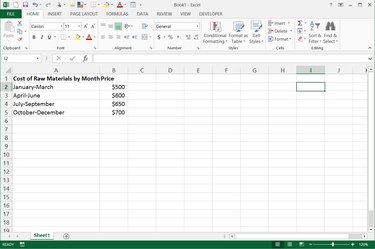
Open or create a spreadsheet containing any raw data you need to make your decision tree, such as the potential costs involved in the process you're considering.
Video of the Day
Step 2
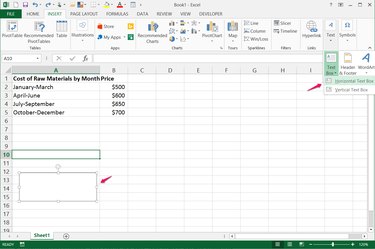
Switch to the "Insert" tab, click "Text," "Text Box" and "Horizontal Text Box." Click and drag to draw a box and then type the first piece of your tree, such as the question. If your Excel window is large enough, the "Text Box" button appears directly in the Text section of the Insert tab.
Step 3
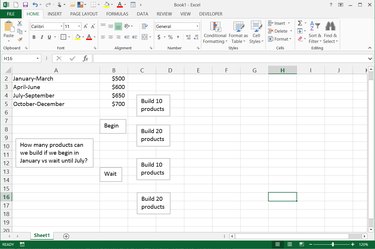
Add additional text boxes and fill in each step of your decision-making process.
Step 4
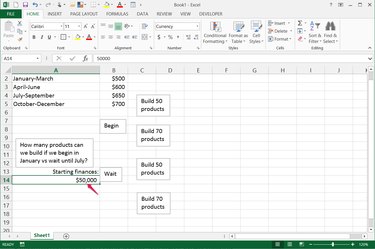
Enter a starting condition in a cell near your first text box, such as the amount of money you're starting with.
Step 5
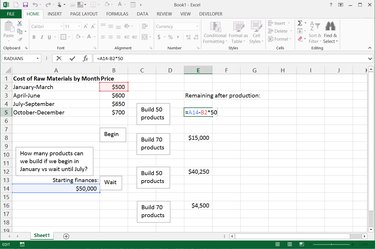
Create equations to work out the final results for each potential result on the tree. Start each equation with an equals sign, use cell locations to reference existing data and modify the data with mathematical operators. You can also insert any of Excel's functions for more advanced formulas.
Step 6
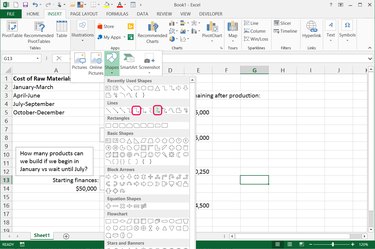
Click "Illustrations" and then "Shapes" on the Insert tab to choose a connecting line to tie the text boxes together. In large Excel windows, "Shapes" appears directly in the Illustrations section of the Insert tab. Both the "Curved Arrow Connector" and "Elbow Arrow Connector" work well for decision trees.
Step 7

Click on one of the dots on a text box's border and drag to another text box to insert a connector. By using the dots around the text box, the connector attaches to the text boxes perfectly. Dots appear only when you place the mouse near a text box.
Step 8
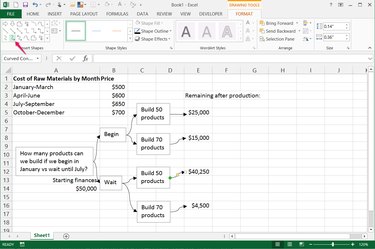
Reselect the same line style on the Format tab, which appears after you create your first line, to quickly prepare another connector. Draw the line and then repeat to add the rest of the lines in the tree. You need to reselect the line style prior to drawing each connector.
Step 9
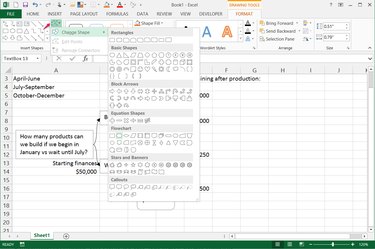
Select a text box, click the "Edit Shape" button on the Format tab and choose "Change Shape" to change a box from a rectangle to another shape. Excel includes a section of flowchart shapes that work well with decision trees.
Video of the Day
- Office Online: Add, Copy, or Delete a Text Box
- Office Online: Draw or Delete a Line, Connector, or Freeform Shape
- Office Online: Group or Ungroup Shapes, Pictures, or Other Objects
- Office Online: Create a Decision Tree
- Office Online: Create a Basic Flowchart
- Office Online: Excel Functions (By Category)